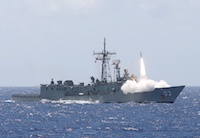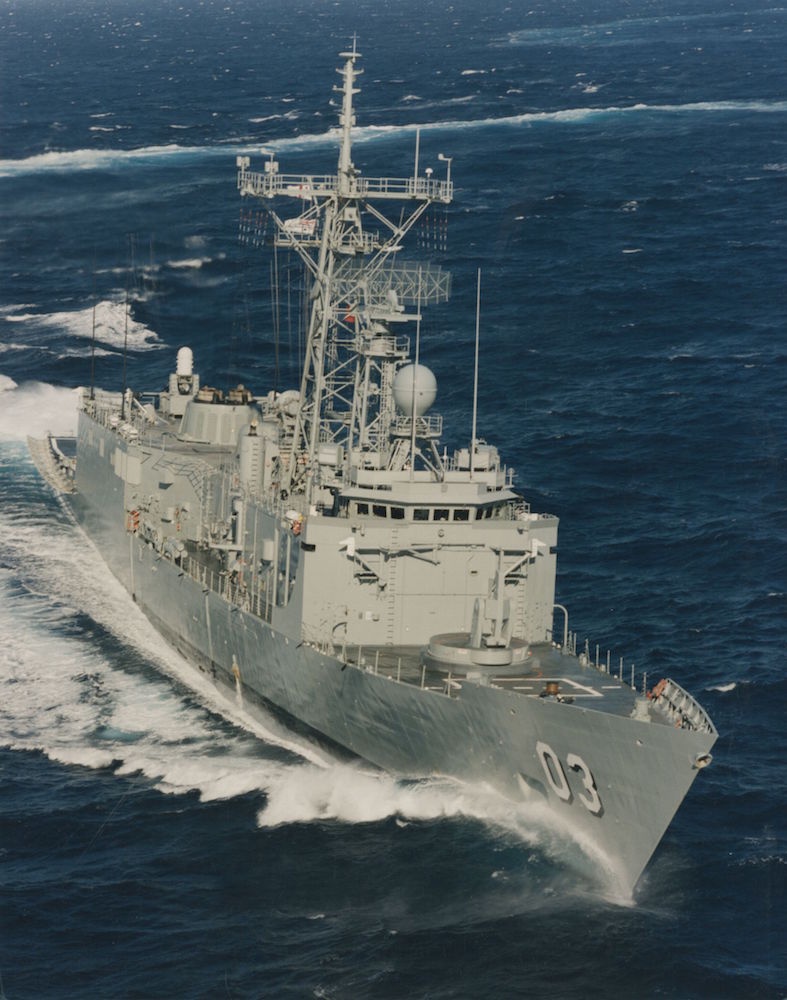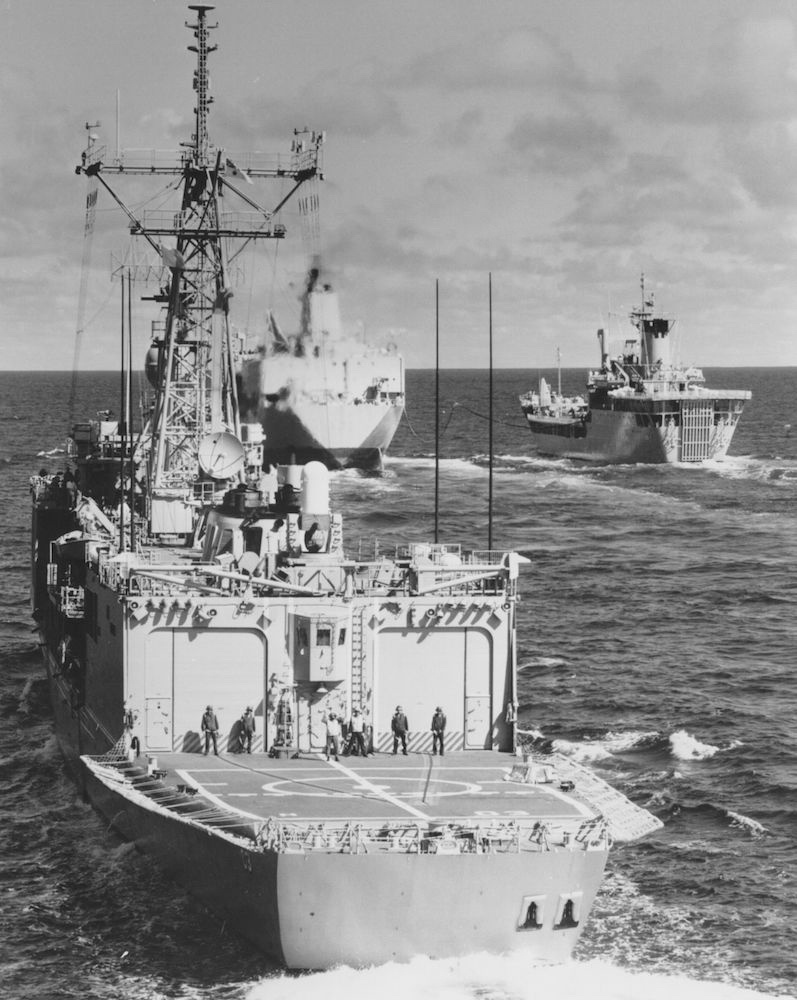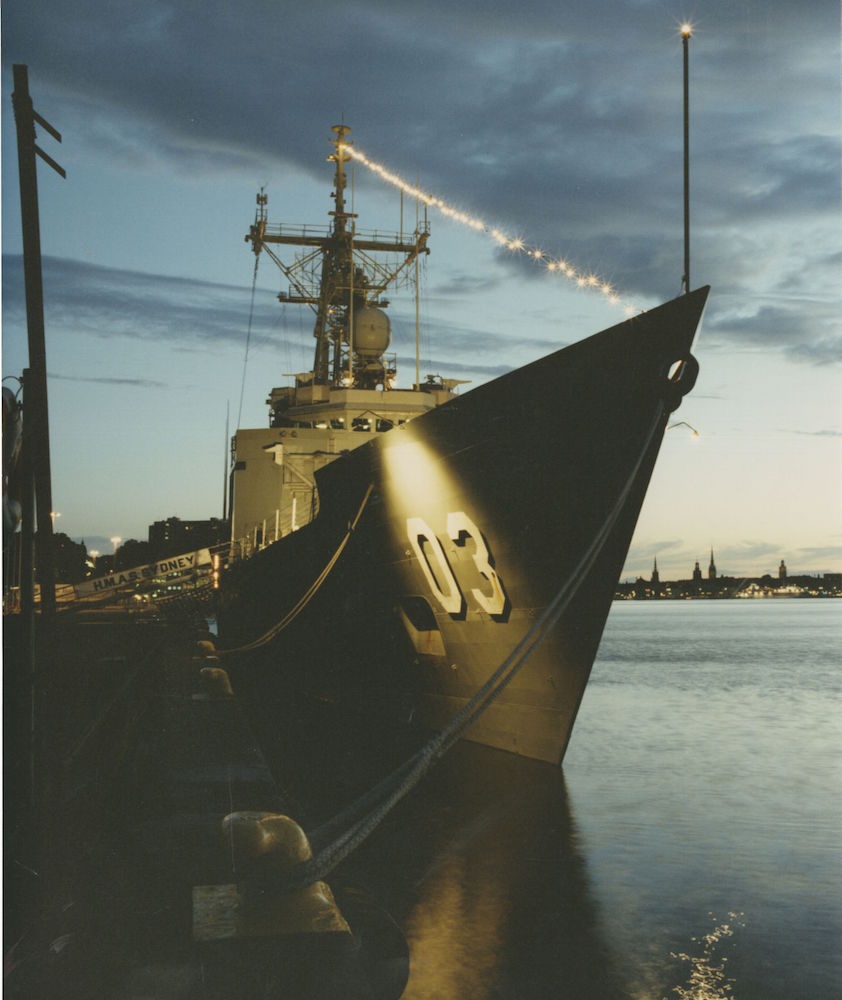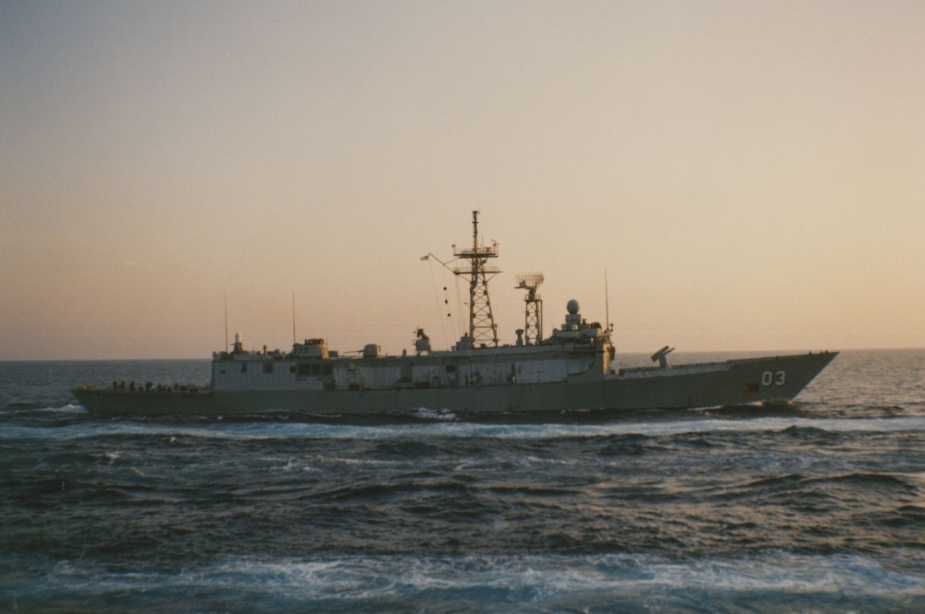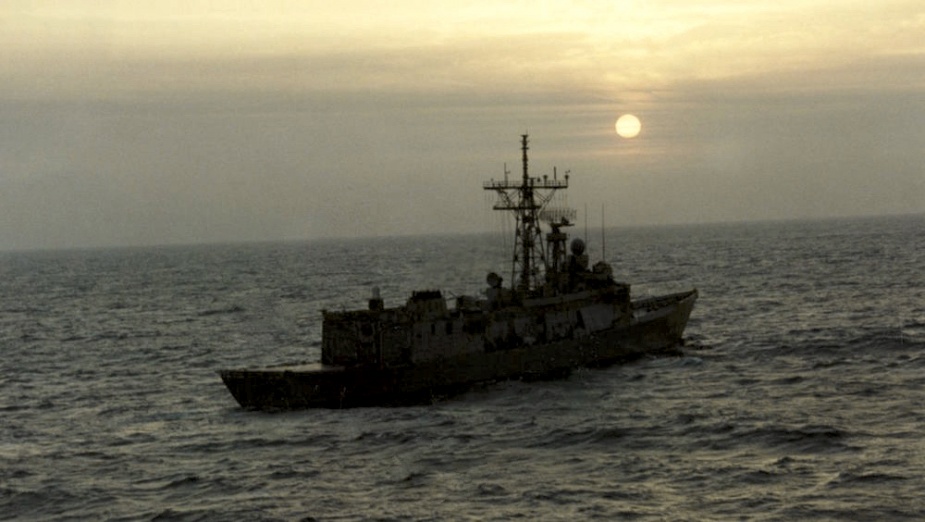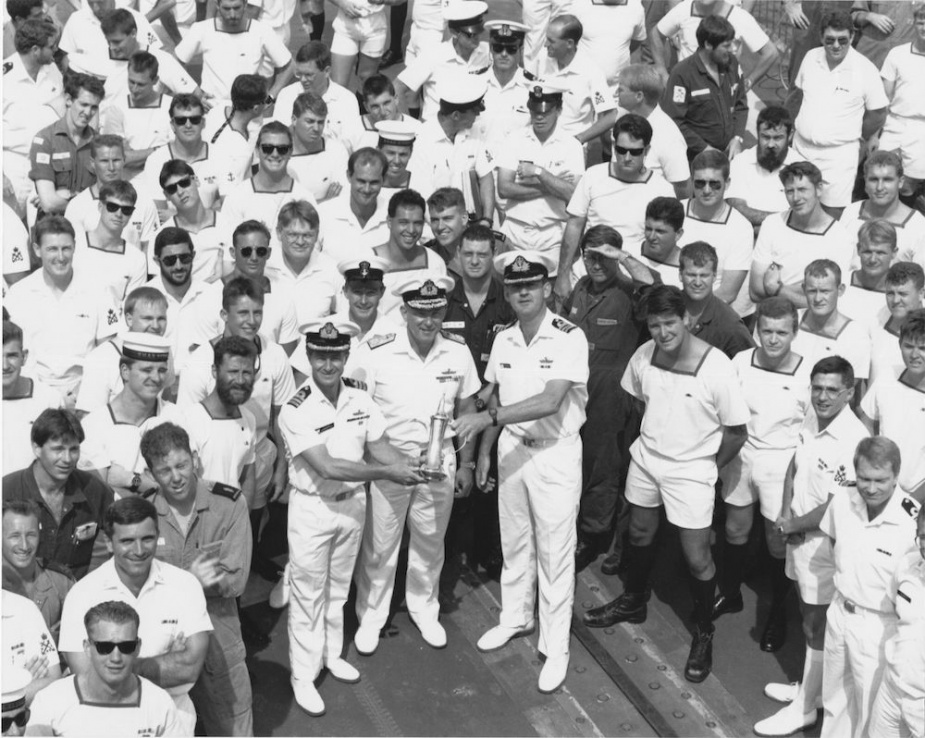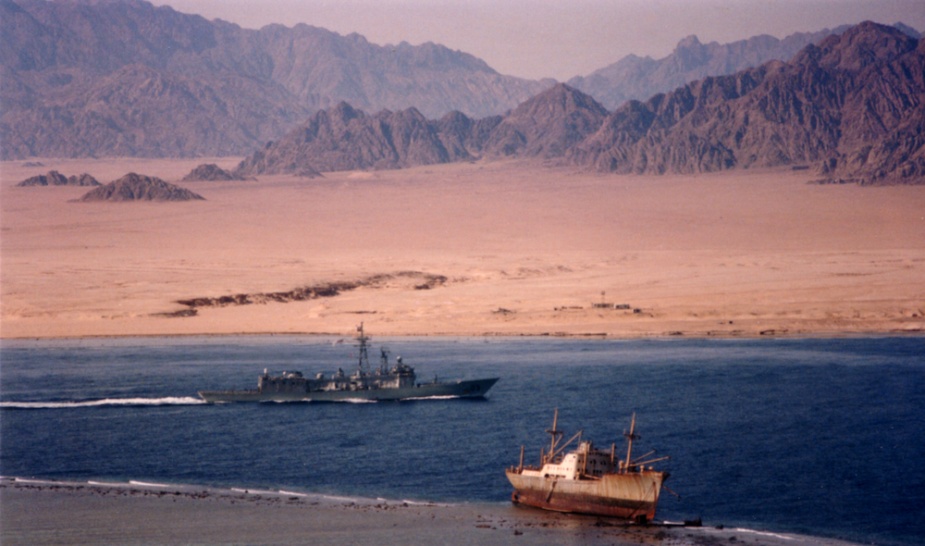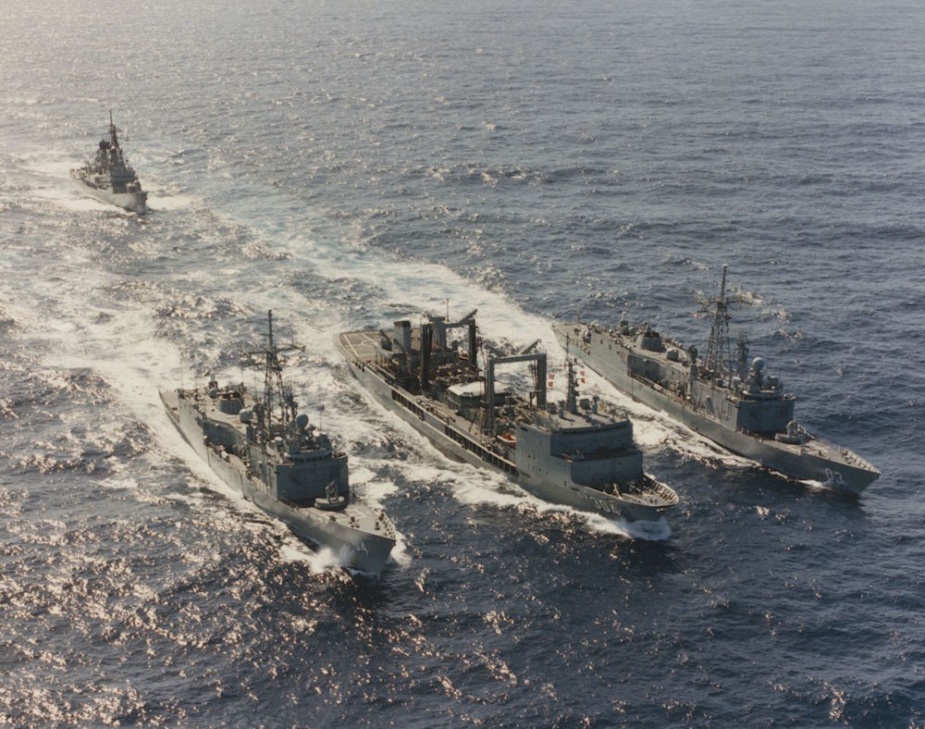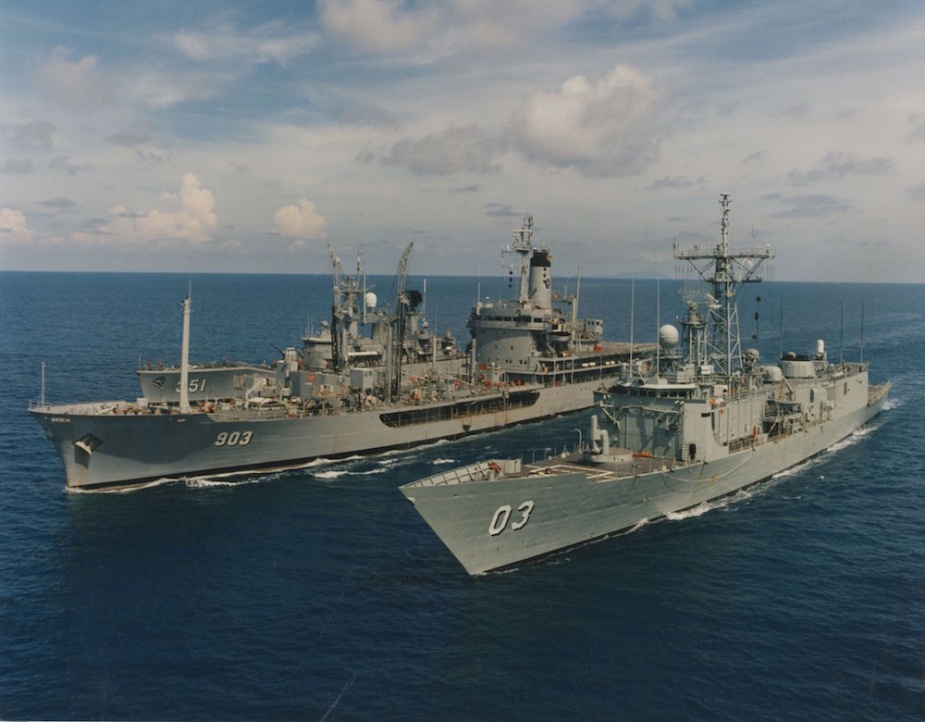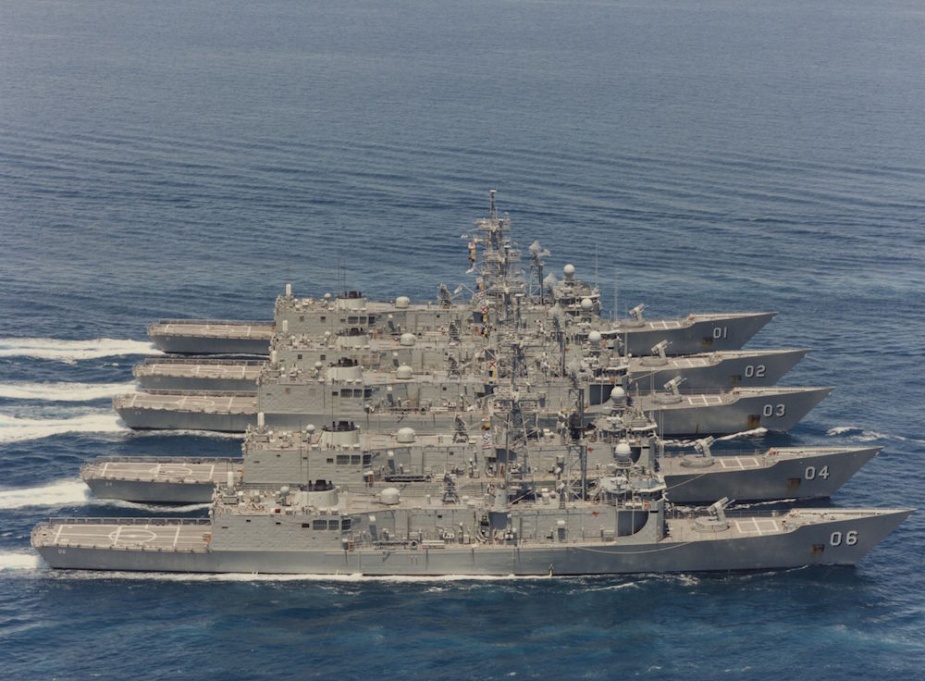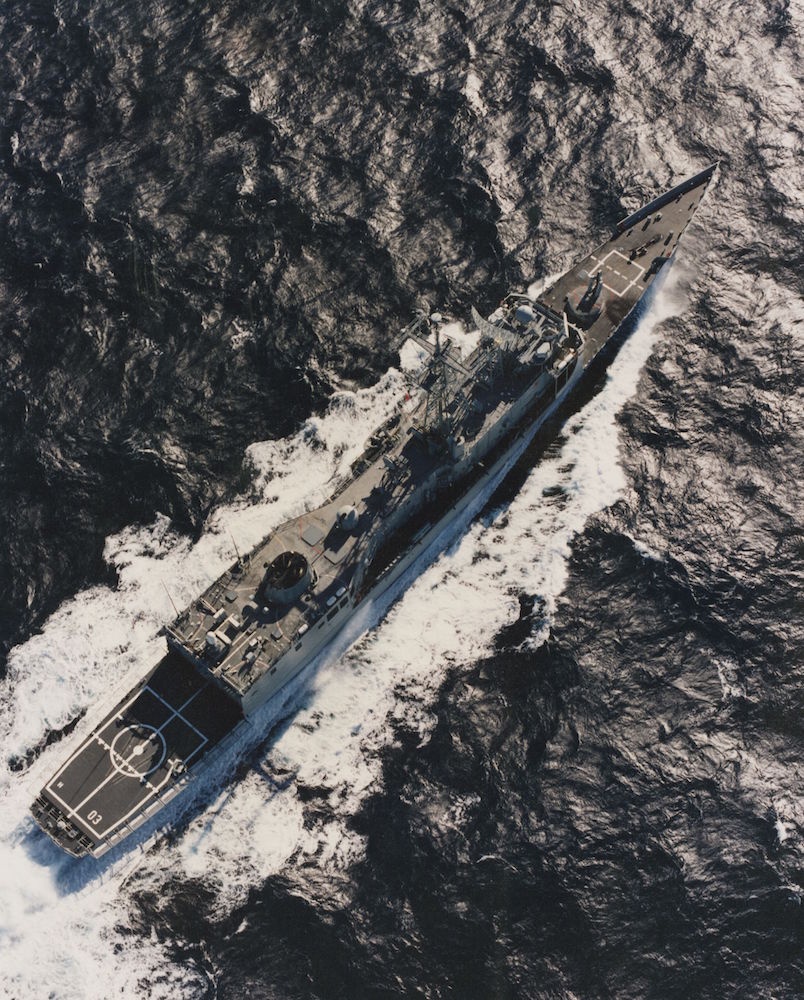HMAS Sydney (IV) - Part 2
| Class |
Adelaide |
|---|---|
| Type |
Guided Missile Frigate (FFG) |
| Pennant |
03 |
| International Callsign |
VKML |
| Nickname |
'Steak n Kidney' |
| Motto |
Thorough and Ready |
| Builder |
Todd Pacific Shipyard Corporation, Seattle |
| Launched |
26 September 1980 |
| Launched by |
Mrs Marjorie Joyce Willis |
| Commissioned |
29 January 1983 |
| Decommissioned |
7 November 2015 |
| Dimensions & Displacement | |
| Displacement | 4267 tonnes |
| Length | 138.1 metres |
| Beam | 13.7 metres |
| Draught | 4.5 metres |
| Performance | |
| Speed | 29 knots |
| Range | 4500 nautical miles |
| Complement | |
| Crew | 210 |
| Propulsion | |
| Machinery |
|
| Armament | |
| Missiles |
|
| Guns |
|
| Torpedoes | 6 x Mk 32 (2 triple) tubes |
| Helicopters |
|
| Awards | |
| Inherited Battle Honours | |
| Battle Honours | |
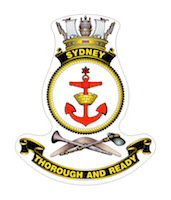
She was back at sea on 22 January 1990 conducting shakedown exercises and on 26 January departed Sydney for Cairns under the auspices of Operation DEFERENCE, the Australian Defence Force (ADF) contingency plan to evacuate Australians from Bougainville should political tensions there continue to rise. She arrived in Cairns on 28 January but was released from Operation DEFERENCE on 31 January and departed Cairns for New Zealand the following day.
She participated in the Fleet Concentration Period 1/90 in February which was conducted in New Zealand waters in the Bay of Plenty area and included Navy and Air Force units from Australia, New Zealand and Canada. More than 4500 personnel participated over the ten days of the exercise, which was not without incident for Sydney. On 10 February during a towing exercise with HMAS Swan (III), the towing hawser failed and fouled Sydney's propeller requiring her to return to Auckland at slow speed for repairs. She retuned to the exercise on 11 February but the following day, she suffered a power failure while conducting a replenishment with Success necessitating an emergency breakaway. Sydney arrived back in Sydney on 18 February where she began preparations for a deployment that would see her circumnavigate the globe visiting 14 countries.
She departed Sydney on 5 March in company with HMAS Tobruk (II), which would accompany her as far as Turkey for Anzac Day commemorations. She was forced to make an emergency stop at Esperance, however, as a senior sailor had suffered a suspected heart attack as ship crossed the Great Australian Bight. The sailor made a full recovery but was unable to re-join the ship for the deployment.
After a visit to Fremantle and a brief period exercising off the Western Australian coast, Sydney departed Australian waters on 16 March. Her first overseas port of call was the capital of the Seychelles, Port Victoria, on 28 March where members of both Sydney and Tobruk's ships' companies conducted civil aid projects at Victoria Hospital, an aged care home and a children's playground.
They passed through the Suez Canal on 11 April and visited Alexandria, Egypt, before continuing on to Turkey. They anchored in Anzac Cove on 18 April before arriving in Istanbul the following day. They visited Canakkale on 23 April conducting a memorial service over the wreck of HMAS AE2 en route. They anchored in Anzac Cove on 24 April in preparation for the 75th anniversary of the ANZAC landings at Gallipoli. Members of both ships' companies participated in commemorative services ashore on Anzac Day and Sydney joined Turkish, French and British ships for a sailpast and gun salute off the Turkish Memorial at Cape Helles. At the completion of the commemorative activities, Tobruk detached for return to Australia while Sydney remained in the Mediterranean for exercises with HM Ships Argonaut and Broadsword. She also conducted a memorial service off Cape Spada where HMAS Sydney (II) sunk the Italian cruiser Bartolomeo Colleoni in 1941.
The remainder of the European leg of the deployment took Sydney to; Naples, Italy, where some members of the crew travelled to the Vatican for an audience with His Holiness Pope John Paul II; Toulon, France; Portsmouth and Portland, UK; Oslo, Norway; Rosyth and Edinburgh, Scotland; Stockholm, Sweden; and Kiel, West Germany. They conducted exercises with FNS Dupleix in the Mediterranean, participated in the NATO Exercise OPEN GATE 90 in the approaches of the Strait of Gibraltar, two multi-national exercises off Portland and the Firth of Forth, and conducted exercises with Royal Air Force and Royal Canadian Navy aircraft while crossing the North Atlantic Ocean to Halifax, Canada. On 18 May while at Portsmouth, His Royal Highness Prince Charles, Prince of Wales, toured the ship and celebrated the 21st birthday of Able Seaman Chris Gittens with the rest of crew.
Sydney arrived in Halifax, her first North American port of call for the deployment, on 21 July for a three day visit before visiting Norfolk, Virginia, USA, from 26 July to 1 August. She conducted exercises with USN units and contributed surveillance support to the US Counter-narcotics Program as she transited south towards Panama. She passed through the Panama Canal on 7 August and conducted exercises with USN and RN units en route to San Diego, California. On 14 August Sydney received a signal instructing her to expedite her return to Australia to prepare for a possible deployment to the Persian Gulf in support of Operation DAMASK. She visited San Diego on 15-19 August, Pearl Harbor, Hawaii, on 25-26 August and Pago Pago, American Samoa, on 1 September. She arrived back in Sydney on 8 September where she commenced a leave and maintenance period.
Sydney returned to sea on 15 October and began an intensive workup programme in preparation for her deployment to the Persian Gulf. She also underwent a number of capability enhancements including new satellite communications equipment, surveillance systems, electronic warfare equipment, new radar absorbent material panels, and improved firefighting and damage control equipment. Her sea boats were also replaced with more robust rigid hull inflatable boats. She departed Sydney on 12 November, in company with Brisbane, having embarked Prime Minister Bob Hawke for a farewell address that morning.
On 30 November, just before entering the Middle East Area of Operations (MEAO), the ships were advised that the United Nations Security Council had adopted Resolution 678 authorising the use of force against Iraq unless it withdrew from Kuwait by 15 January 1991. On 3 December, Prime Minister Hawke announced that Australian units were allowed to pass through the Strait of Hormuz and enter the Arabian Gulf. Sydney and Brisbane were to form part of the largest grouping of warships seen since the end of World War II. The multi-national Coalition included some 90 warships, more than 100 logistic, amphibious and smaller craft, and 800 aircraft from 15 nations.
Sydney and Brisbane arrived in the MEAO, via Fremantle and Diego Garcia, on 3 December 1990. They rendezvoused with HMA Ships Success, Darwin and Adelaide that morning and conducted a thorough handover after which they commenced Maritime Interception Force duties. They sailed through the Strait of Hormuz and entered the Arabian Gulf for the first time on 16 December.
On 24 December, Sydney was instructed to join five other Coalition warships to assist in the interception of the Libyan sponsored 'Peace Ship' Ibn Khaldoon. In an attempt to embarrass the multi-national force, Ibn Khaldoon had departed Aden in Yemen with 240 women, children and journalists embarked, along with the Iraqi crew of 40, with the intent of breaking the UN-imposed embargo. Sydney joined six other Coalition vessels and was tasked as the lead intercept and challenge unit. They intercepted Ibn Khaldoon on 26 December and, after receiving no response from the vessel after warnings to stop, boarding parties, including one from Sydney, were inserted and took control. The ship was later found to be carrying cargo prohibited by the UN embargo. Sydney was involved in the interception of a second vessel, Ain Zalah, on 30 December, but this vessel was carrying no prohibited cargo and allowed to proceed to Basrah.

